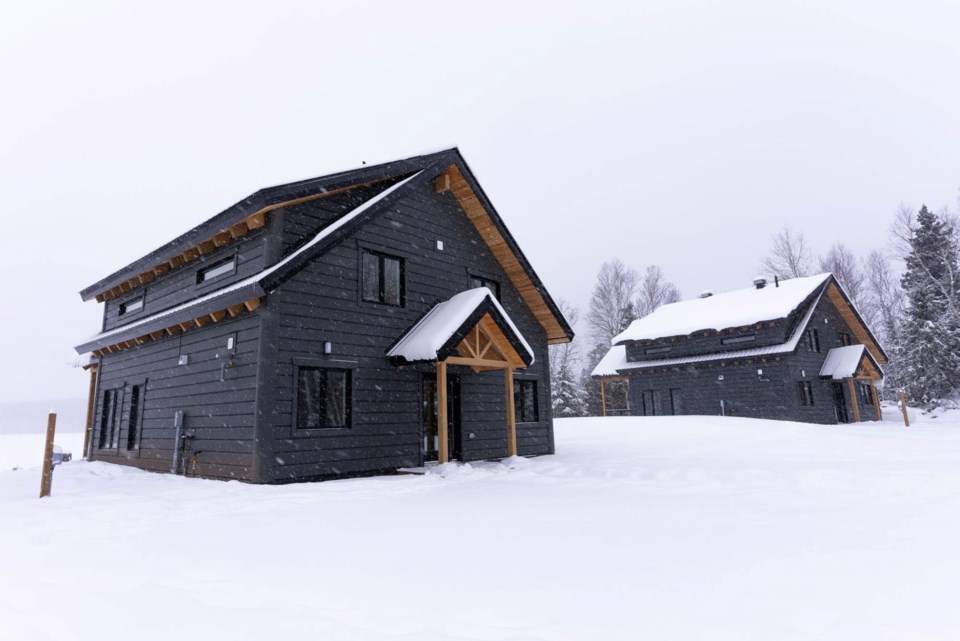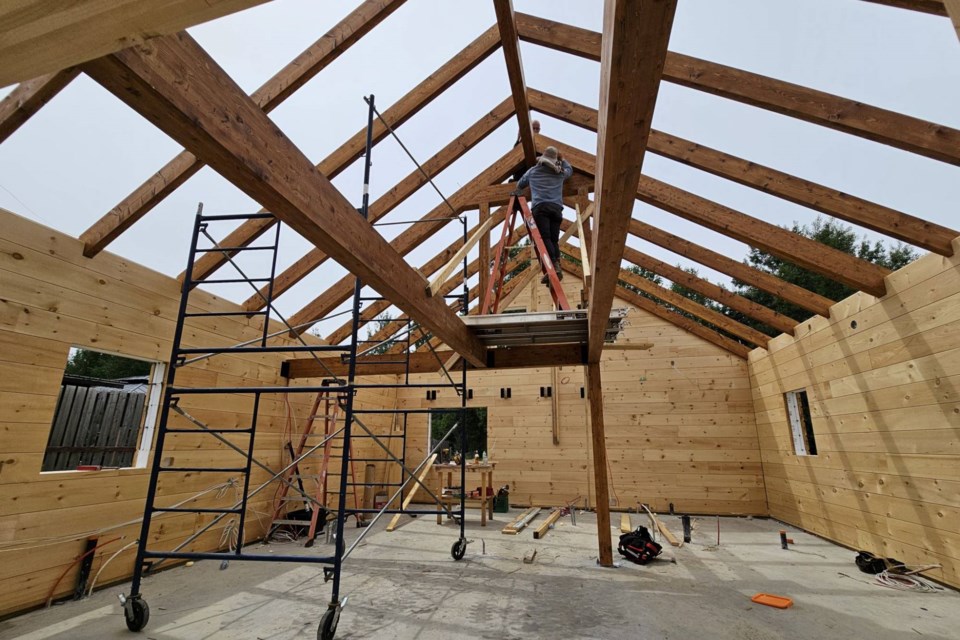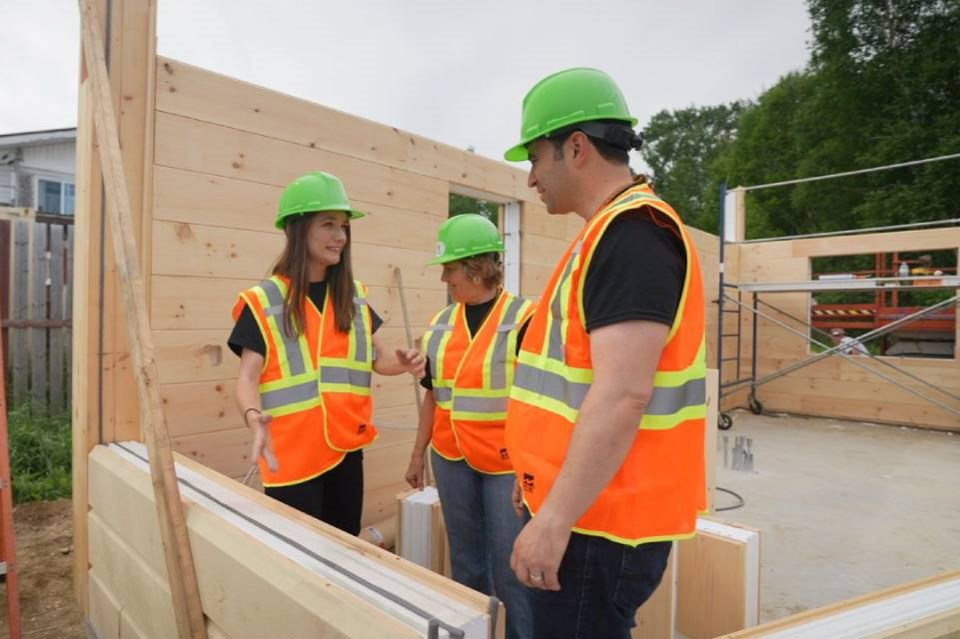An Indigenous-owned not-for-profit is one of nine organizations to receive funds from the Canada Mortgage and Housing Corporation (CMHC), which will be used to build homes in communities across the North.
On Jan. 8, One Bowl – Tree to Home announced it had received $3 million as a finalist in the CMHC’s Housing Supply Challenge, with a chance to secure an additional $5 million later this winter.
Candace Larsen, One Bowl’s business development officer, said the organization first applied to the program last January — one of 252 applicants — and made it through the first round, receiving $1 million in funding.
Eighteen recipients were further whittled to nine, with each receiving $3 million.
Those semi-finalists will now enter the final stage of the competition, which will conclude in March with the selection of three ‘Game-Changers,’ each of which will get $5 million.
One Bowl has already seen an impact from the funding, Larsen said.
“That kind of dollar value impact investment has really been instrumental in the growth that One Bowl’s achieved recently,” Larsen said.
“Very quick competition, but incredible growth that it’s achieved for us.”

Incorporated in 2022, One Bowl is led by Wahkohtowin Development, a collaboration of three First Nations in the Northeast Superior area: Chapleau Cree First Nation, Missanabie Cree First Nation, and Brunswick House First Nation.
Their partner in the initiative, the Quebec company Boréal Products, makes the Thermolog, a slab of high-density expanded polystyrene sandwiched between two lengths of white pine.
Using Thermologs instead of traditional stick construction aims to offer an all-in-one housing solution — exterior, insulation, interior, structure, and aesthetic — speeding up build time and simplifying the construction process.
One Bowl’s mission is threefold: help alleviate the current housing crisis by building more homes; train members of participating communities in skilled labour, thereby easing the labour shortage; and address economic inequities in northern, rural, remote and Indigenous communities by creating new opportunities.
Participation in the Housing Supply Challenge has enabled One Bowl to fast-track progress in all three areas, Larsen said.
One Bowl has secured “very significant Indigenous ownership” in a Thermolog manufacturing facility that’s proposed for the Sturgeon Falls area, west of North Bay, she noted.
The facility is in development, but Larsen said they’re aiming for an opening around the end of 2025 or early 2026.
Once complete, the facility would have the capacity to supply Thermologs for more than 500 homes annually to the Ontario construction market, and revenue from sales would be reinvested into One Bowl’s housing efforts.
SEE: ‘Tree-to-home’ solution aims to increase reliable Indigenous housing stock
In addition, the organization has been able to further develop its “train-the-trainer” program, which trains instructors in the Thermolog building process, who then lead participating community members in a build right on site.
The goal is that communities that purchase Thermolog homes through One Bowl would become self-sustaining, maintaining homes and building new ones over time, Larsen said.
Seven people have so far been trained in the process, she noted. Two are from Chapleau Cree First Nation and have gone through the full training-build cycle, leading teams in the construction of three homes.
Larsen said communities have been responsive to the alternative homebuilding method.
“When we're talking about stepping away from drag-and-drop homes, the engagement and excitement is there because most of the nations see, and are tapping into, capacities that they have within their own communities,” she said.
“And so seeing a housing solution that would support their own nation's capacity is something where we're seeing a lot of engagement and uptake.”
To date, 22 units have either been sold or are in the process of being sold, in both Indigenous communities and municipalities.
They include Chapleau Cree First Nation, Brunswick House First Nation, Kashechewan First Nation, Fort Albany First Nation, and Attawapiskat First Nation. Later this year, more units will head to municipalities, including Hearst.
One Bowl currently has more than a dozen proposals out to new potential community partners, and several are for multi-unit developments.
Word of mouth has certainly helped spread One Bowl’s message, as did the organization’s inaugural housing summit, held last June in Chapleau.
The two-day event surpassed One Bowl’s expectations, Larsen said, with more than 80 people attending at the peak of the conference.
To give participants a first-hand view of One Bowl’s process, they gathered at an active construction site and took part in constructing a home, a component Larsen called “eye-opening” for participants.
A follow-up conference is planned for a future date, although details are still being determined.
“Our target would be that our next housing summit would be hosted at that pilot project in a different northern municipality,” Larsen said.
“So bringing the same kind of crowd up to a different community to showcase a thermal log build within that community itself.”

One Bowl has until early February to submit its application to the final stage of the Housing Supply Challenge in order to be eligible for one of the three $5-million grand prizes.
Winning that stage would further speed up development of the Sturgeon Falls manufacturing facility, Larsen said.
Though it seems like the organization has achieved a lot in a very short time, Larsen said this is “just the beginning.”
“This has been an absolutely amazing milestone for One Bowl, but, really, it's validated the power of an Indigenous-led innovation in housing as a whole,” she said.
“It's really shown that an Indigenous-led solution can address systemic challenges that we've been experiencing across Canada.”



